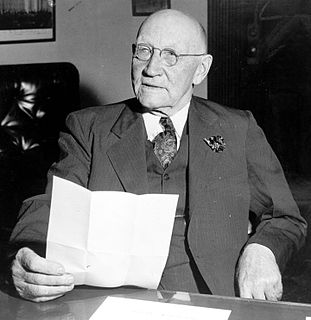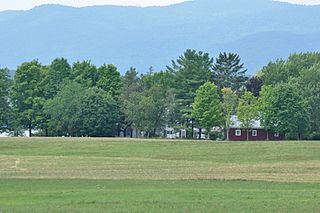
Onslow County is a county located in the U.S. state of North Carolina. As of the 2010 census, the population was 177,772. Its county seat is Jacksonville. The county was created in 1734 as Onslow Precinct and gained county status in 1739. Onslow County comprises the Jacksonville, NC Metropolitan Statistical Area. The southern border is the coast of the Atlantic Ocean.

Jacksonville is a city in Onslow County, North Carolina, United States. As of the 2010 United States census, the population was 70,145, which makes Jacksonville the 14th-largest city in North Carolina. Jacksonville is the county seat and most populous community of Onslow County, which is coterminous with the Jacksonville, North Carolina metropolitan area. In 2014, Forbes magazine ranked Jacksonville as the fifth-fastest growing small city in the United States. Demographically, Jacksonville is the youngest city in the United States, with an average age of 22.8 years old, which can be attributed to the large military presence. The low age may also be in part due to the population drastically going up over the past 80 years, from 783 in the 1930 census to 70,145 in the 2010 census.

Robert Lee "Bob" Doughton, of Alleghany County, North Carolina, sometimes known as "Farmer Bob", was a member of the United States House of Representatives from North Carolina for 42 consecutive years (1911–1953). A Democrat originally from Laurel Springs, North Carolina, he was the Dean of the United States House of Representatives for his last few months in Congress. He is the longest-serving member ever of the United States House of Representatives from the state of North Carolina. In the 1930s Doughton was a key player in the creation of the Blue Ridge Parkway and the passage of the Social Security Act.

Wood Lawn, also known as Woodlawn, is a plantation house built in 1836 and listed on the National Register of Historic Places. Located near Mount Mourne, Iredell County, North Carolina 1-mile (1.6 km) north of Davidson, North Carolina, the house was built about 1840 and is a fine example of the Federal-Greek Revival style of architecture often built in the Piedmont area during this period. The house was built by Dr. George Washington Stinson, one of the first trustees of Davidson College, which was founded in 1837.
Rufus Ferrand Pelletier, was an early resident and principal founder of Jacksonville, North Carolina. Rufus was a grandson of the powerful Carteret County landowner and Revolutionary War veteran William Dennis Sr.

Piney Grove at Southall's Plantation is a property listed on the National Register of Historic Places in Holdcroft, Charles City County, Virginia. The scale and character of the collection of domestic architecture at this site recalls the vernacular architectural traditions of the eighteenth, nineteenth and twentieth centuries along the James River.

The Nash-Hooper House, also known as the William Hooper House, is a historic house at 118 West Tryon Street in Hillsborough, North Carolina. Built in 1772 by American Revolutionary War general Francis Nash, it was home from 1782–90 to William Hooper, a signer of the United States Declaration of Independence. It is the only known home of Hooper's to survive, and was declared a National Historic Landmark in 1971. It is located in the Hillsborough Historic District; it is a private residence, and is not normally open to the public.

The Governor John Rutledge House is a historic house at 116 Broad Street in Charleston, South Carolina. Completed in 1763 by an unknown architect, it was the home of John Rutledge, a Governor of South Carolina and a signer of the United States Constitution. It was declared a National Historic Landmark in 1973.

Maybury Hill is a historic house at 346 Snowden Lane, in Princeton, Mercer County, New Jersey, United States. Built about 1725, it was the birthplace and boyhood home of Joseph Hewes (1730-1799), a signer of the United States Declaration of Independence. The house, an architecturally excellent example of Georgian domestic architecture, was designated a National Historic Landmark in 1971 for its association with Hewes. It is a private residence not open to the public.

The General Rufus Putnam House is a National Historic Landmark at 344 Main Street in Rutland, Worcester County, Massachusetts, US.

The Emerson–Franklin Poole House is a historic house at 23 Salem Street in Wakefield, Massachusetts. Built about 1795, it was in the 19th century home to Franklin Poole, a locally prominent landscape artist. Some of its walls are adorned with the murals drawn by Rufus Porter. The house was listed on the National Register of Historic Places in 1989.

The Rufus M. Rose House is a late Victorian, Queen Anne style house located in the SoNo district of Atlanta, Georgia. Occupying a narrow lot on Peachtree Street, one and half blocks south of North Avenue, the house was built in 1901 for Dr. Rufus Mathewson Rose. The architect was Emil Charles Seiz (1873-1940), who designed many residential and commercial structures in the city, including the 1924 Massellton Apartments on Ponce de Leon Avenue.

The McClelland Homestead is a historic farm in western Lawrence County, Pennsylvania, United States. Located along McClelland Road northeast of Bessemer, the farm complex includes buildings constructed in the middle of the 19th century. It has been designated a historic site because of its well-preserved architecture.

The Bank of Onslow and the Jacksonville Masonic Temple are two adjoining historic buildings located at 214 and 216 Old Bridge Street, in Jacksonville, Onslow County, North Carolina. The buildings are in the Beaux Arts architecture and Tudor Revival architecture, and were constructed in 1916, and 1919 respectively. They were jointly listed on the National Register of Historic Places in 1989 as a national historic district.

Robert L. Doughton House is a historic home located at Laurel Springs, Alleghany County, North Carolina It was built in 1899, and is a two-story frame farmhouse in a vernacular Queen Anne style influenced frame cottage. It features a steeply pitched hip roof, with a two-story, one-bay gable roof projection. It was the home of Robert L. Doughton (1863-1954), one of North Carolina's foremost politicians of the first of the 20th century. In the 1990s Rufus A. Doughton's house was restored, and it is now a popular bed-and-breakfast for tourists to the region.

Mill Avenue Historic District is a national historic district located at Jacksonville, Onslow County, North Carolina. The district encompasses 31 contributing buildings, 1 contributing site, and 1 contributing structure in a predominantly residential section of Jacksonville. The district developed after 1890 and includes notable examples of Late Victorian and Bungalow / American Craftsman style architecture. Notable contributing buildings include the Jarman Hotel, Jacksonville Depot, Richard Ward House, Richard Ward Guest House, the Lockamy-Chadwick House, George Bender House (1901), Samuel Ambrose House, the Marine House, Steve Aman House, and the Henrietta Jarman House.

Futral Family Farm is a historic farm complex and national historic district located in Richlands, Onslow County, North Carolina. The main house was built about 1885, and is a one-story saddle-notched log hall-parlor plan dwelling. It was enlarged about 1906, with the addition of a frame garret, side room, rear shed rooms, and a semi-detached kitchen and dining room to form a coastal plain cottage with an engaged front porch.

Alum Spring is a historic sulphur spring located at Catherine Lake, Onslow County, North Carolina. The spring was the site of the county poorhouse during the post-American Civil War period. After the poorhouse moved, the county-wide "Big August" picnic social gathering was held at Alum Spring until 1933.

William Edward Mattocks House is a historic home located at Swansboro, Onslow County, North Carolina. It was started in 1901 and completed in the 1910s. It is a 1+1⁄2-story, Colonial Revival style frame dwelling. It has board-and-batten siding, a steeply pitched gable roof with dormers, and two-tier engaged porch. Also on the property is a similar 1+1⁄2-story frame house built about 1931 and operated as a cafe.

Hand's Cove is a historically significant geographic feature on the eastern shore of Lake Champlain in Shoreham, Vermont. It was from this area that colonial forces led by Ethan Allen and Benedict Arnold crossed the lake for the Capture of Fort Ticonderoga, early in the American Revolutionary War. It is also home to the only known colonial-era blockhouse in the state. It was listed on the National Register of Historic Places in 1980.

















